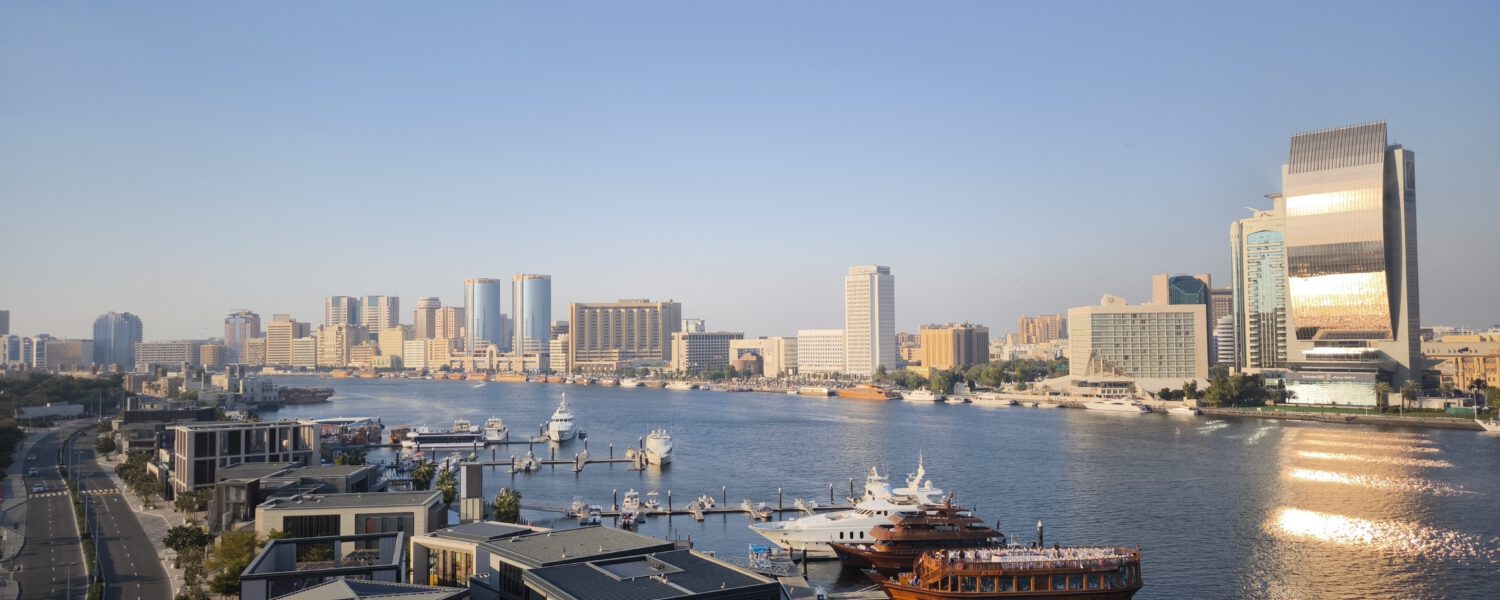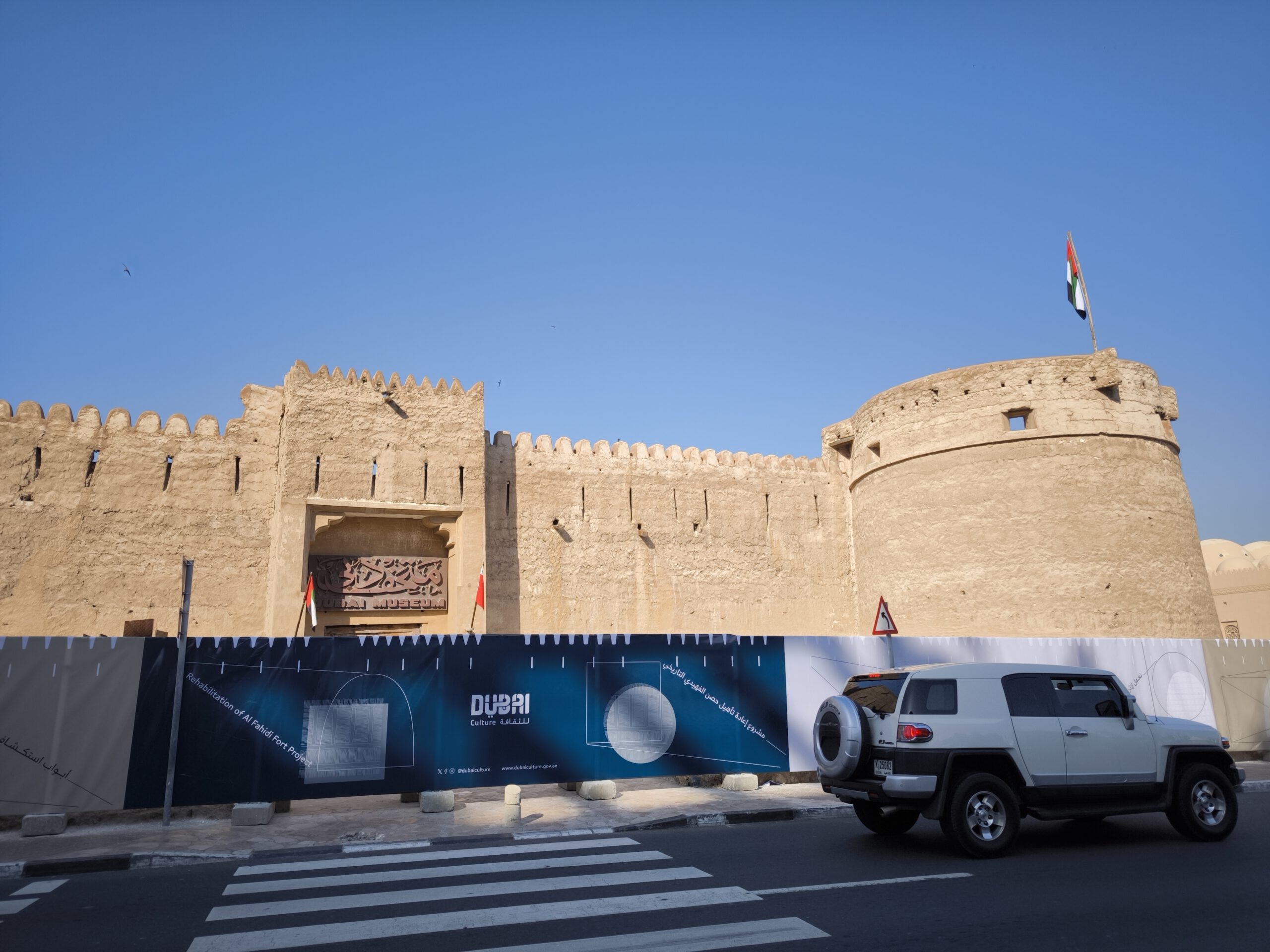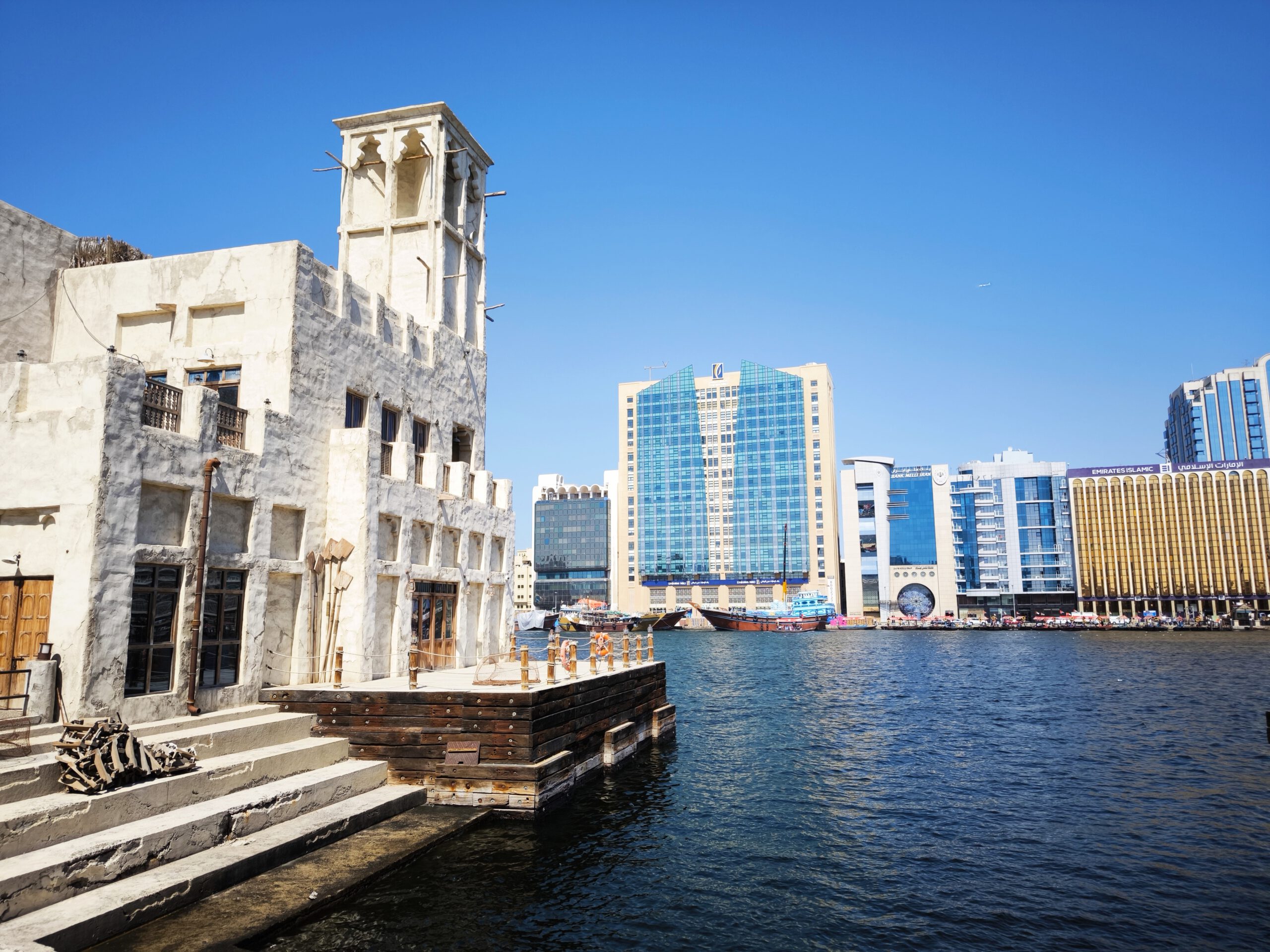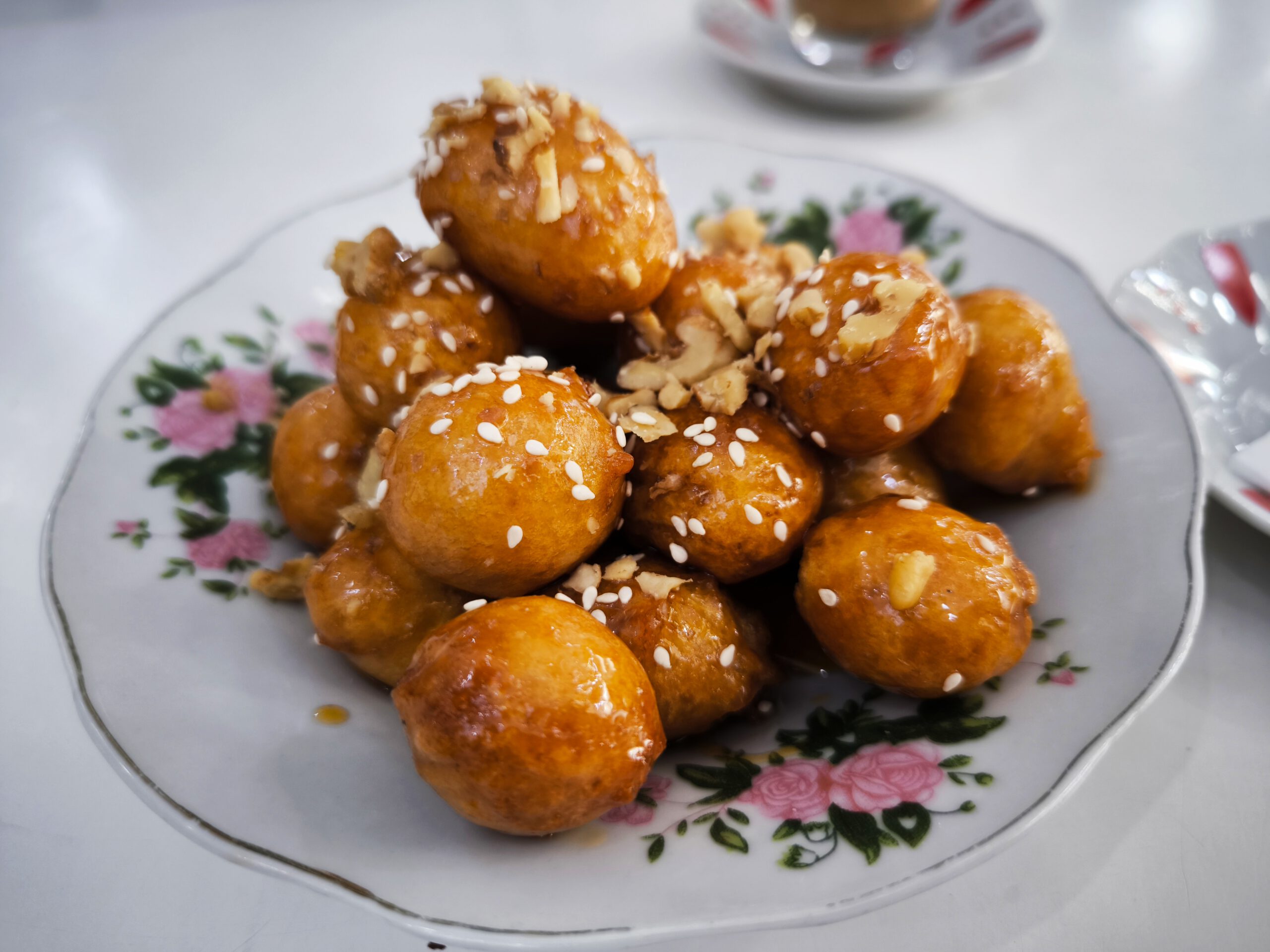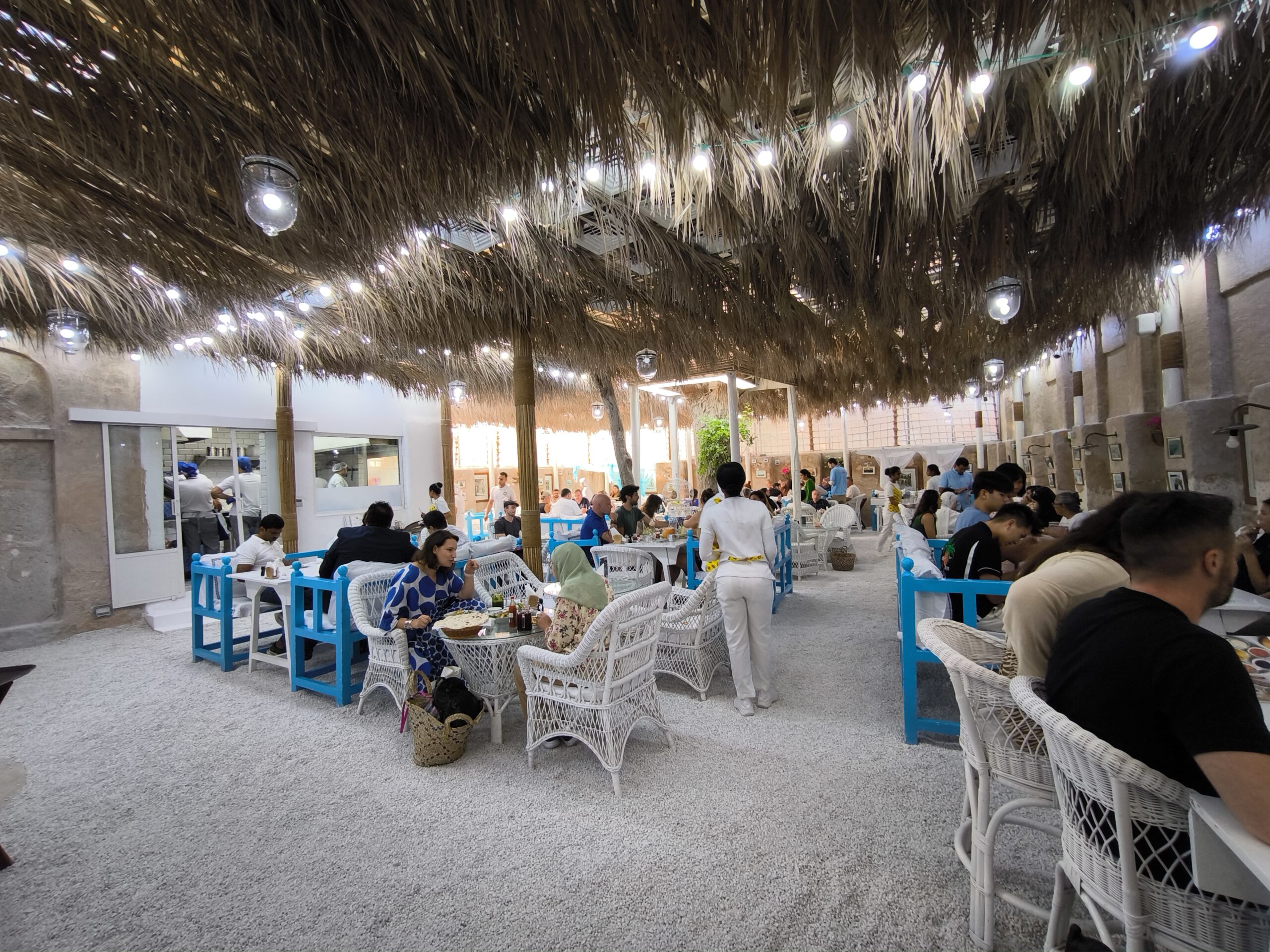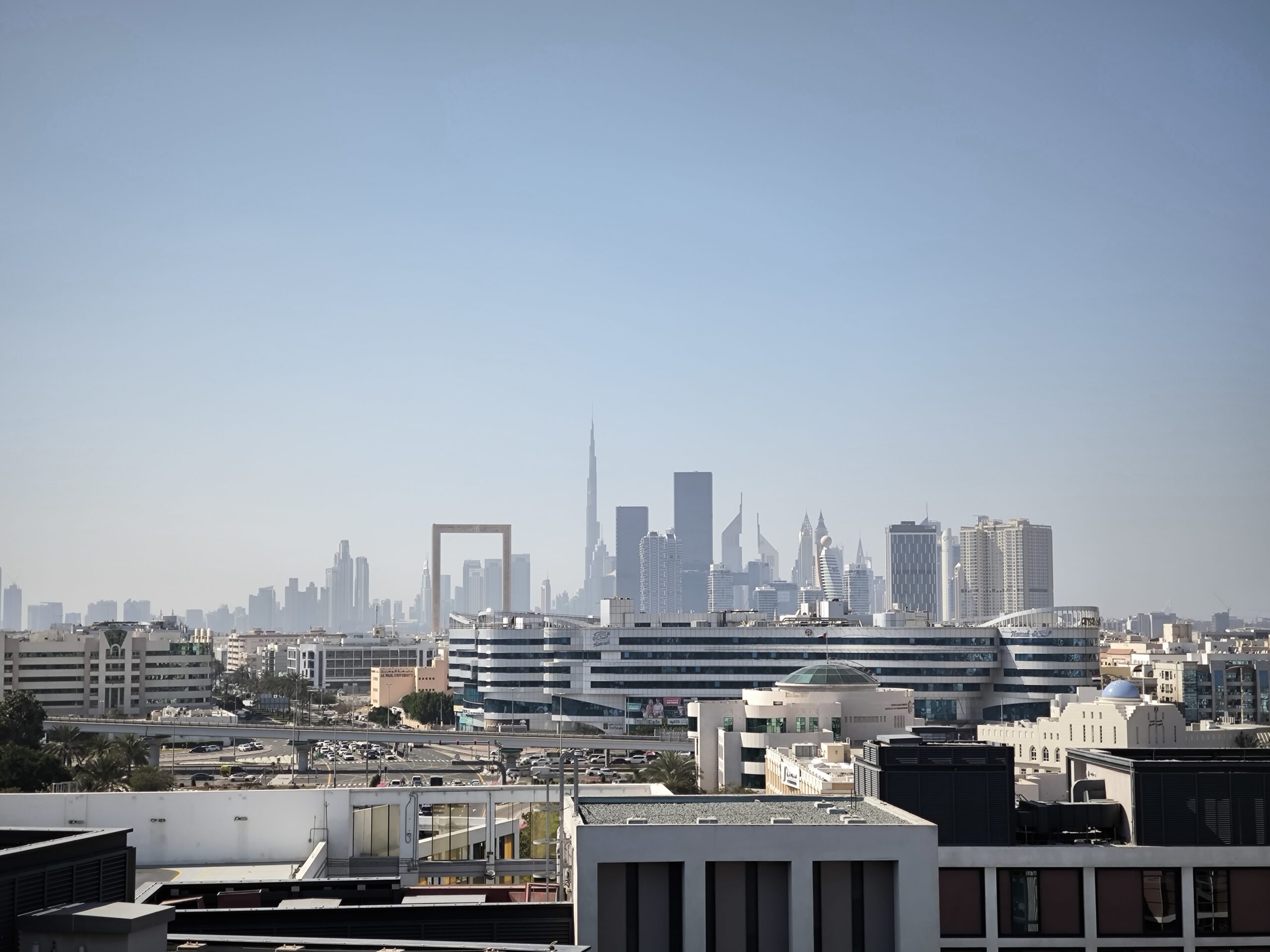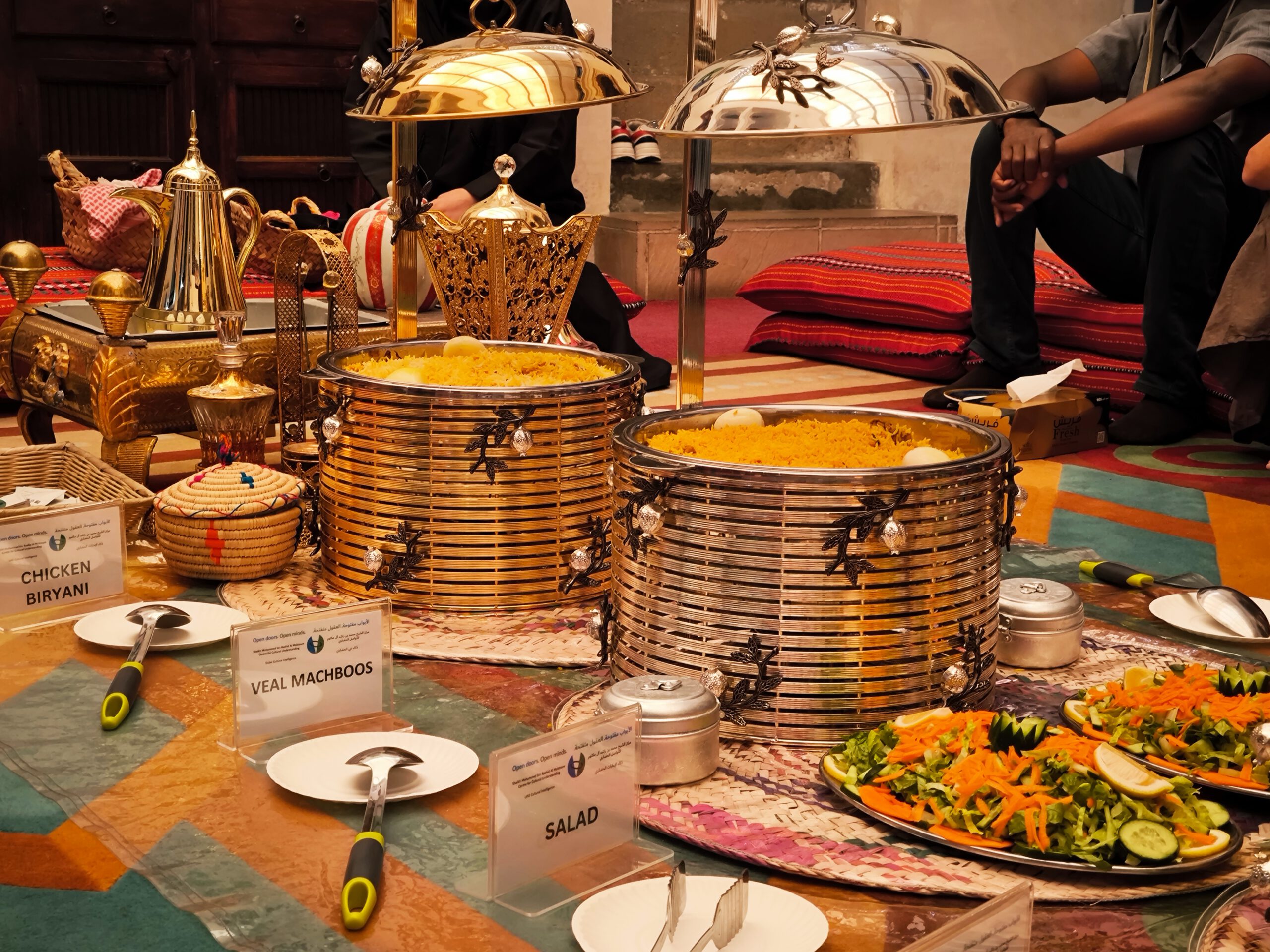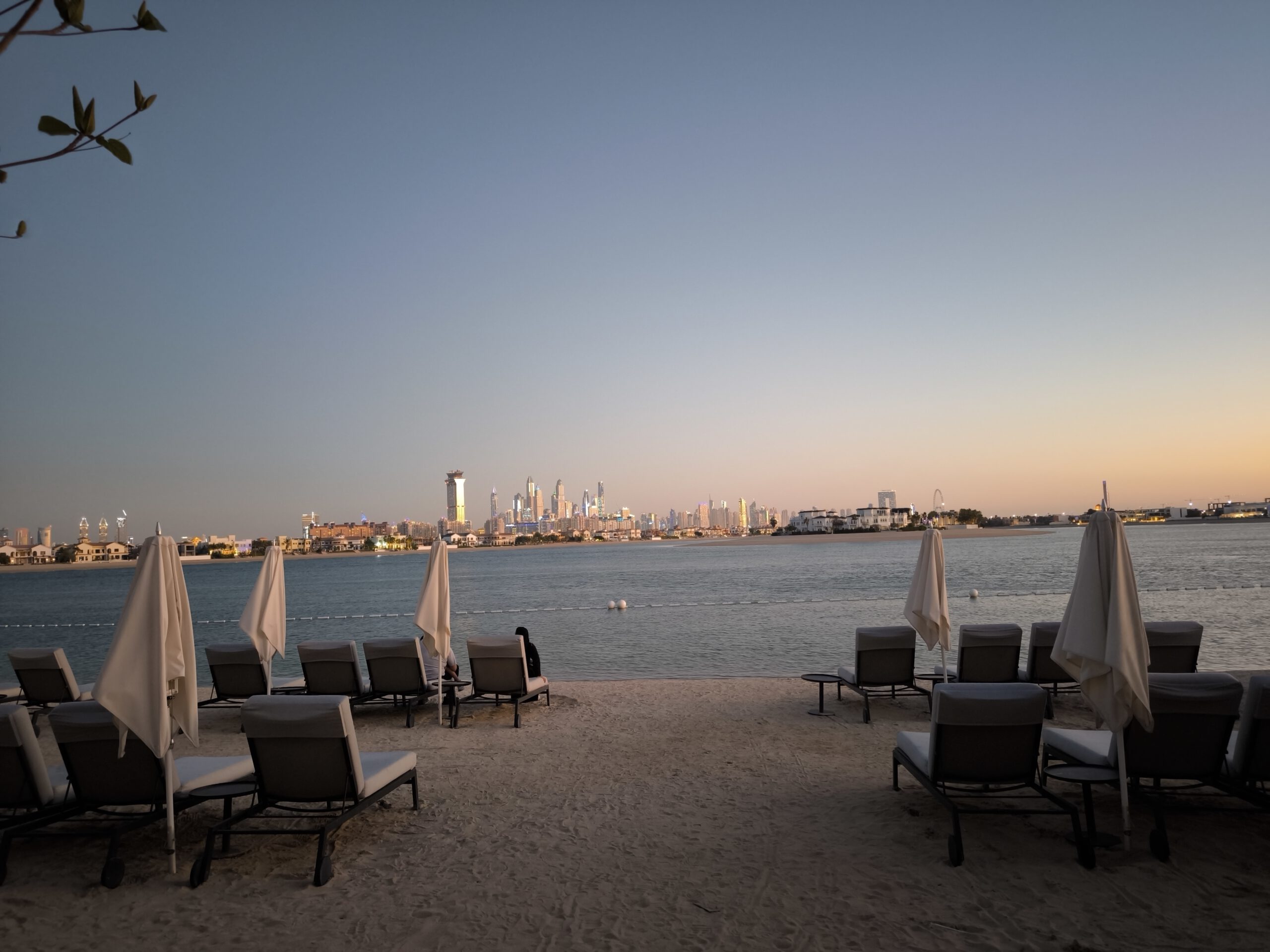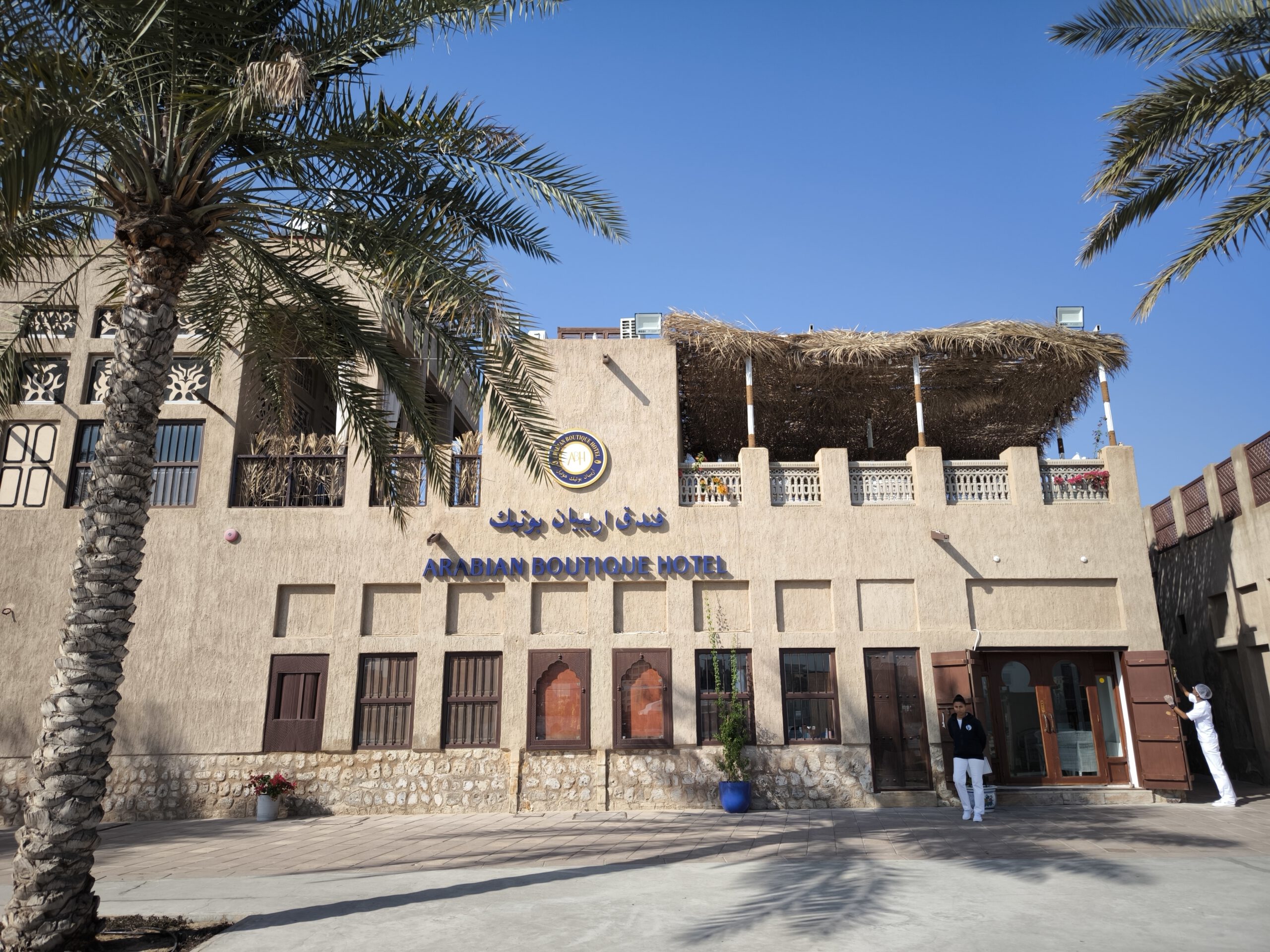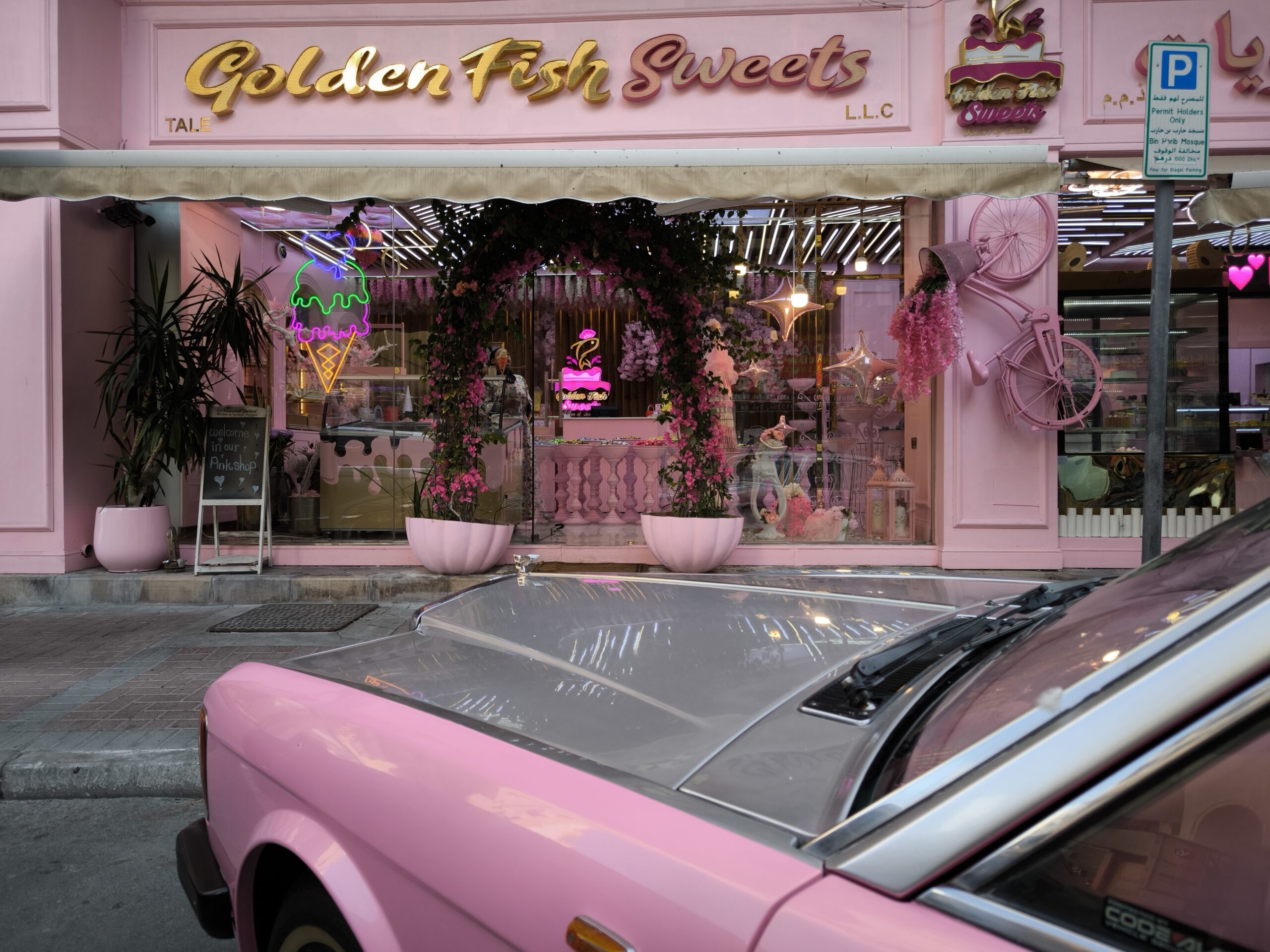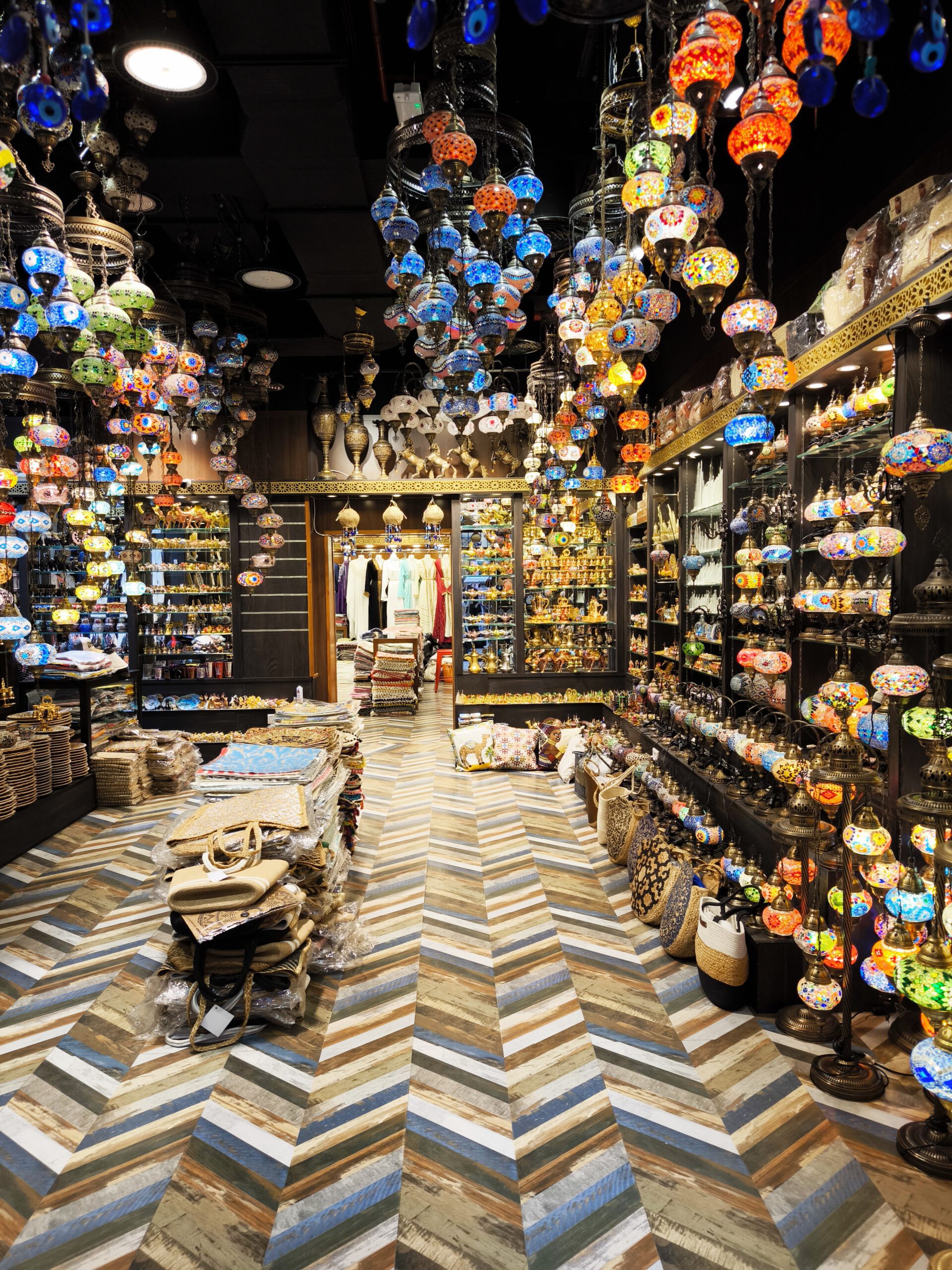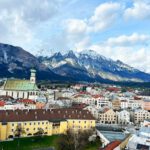
Hall-Wattens – Vacation experiences in Tyrol
26. June 2024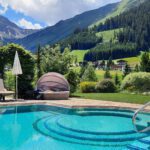
Mountain idyll Berwang
16. September 2024From skyscrapers and wind tower houses
Dubai is more than just beaches, shopping malls and high-rise hotels. In the old town of Bur Dubai, you can immerse yourself in the nucleus of the megacity on the Persian Gulf and experience the oriental flair in the bazaar between wind tower houses. While modern skyscrapers gleam in the sun in the Deira neighbourhood on the opposite side of the creek, in Bur Dubai you can follow in the footsteps of Emirati culture in exciting museums or enjoy local fare in Arabic teahouses.
The scent of roses, myrtle, basil or the woody-sweet oud, an oil made from tree resin, wafts from small containers as if from 1001 nights. Maryam Kalantar stands in front of a display case in the perfume house with the fragrant ingredients, including exotic ones such as the waxy substance from the digestive tract of sperm whales and the chemical substitute ambroxan. ‘These are all substances that Arab perfume masters such as Mona al-Haddad use for their fragrance creations,’ explains the young woman, who guides visitors through the Al Shindagha museum complex in the neighbourhood of the same name in Dubai's old town. ‘We Emiratis associate memories with smells. That's why perfumes play an important role in social life. A perfume diffuser is therefore a must in every household. I even spray my clothes with my favourite perfume,’ says Maryam Kalantar. She then walks around the corner with the visitors to the former palace of the ruling Al Maktoum family, a wind tower house with a surrounding wall, courtyard and private rooms. ‘The family lived here for several generations under one roof from 1896. Before that, they lived in Al Fahidi Fort. The most important place in the house was then, and still is today, the Majlis. People meet here, sit barefoot on cushions, drink coffee, eat dates and have their meals,’ says Maryam Kalantar. The Al Fahidi Fortress, built in 1787, is the oldest building in Dubai and is now the Dubai Museum. ‘It's closed at the moment because it's being renovated,’ she says.
Dubai's old town, Bur Dubai, is very different from the rest of the cosmopolitan megacity on the Persian Gulf with spectacular skyscrapers that are among the most beautiful in the world, such as the Burj Khalifa. 3.55 million people live in Dubai, but only around 285,000 of them are from the emirate. You rarely meet real Emiratis and if you are interested in their culture, you have to visit Bur Dubai. Almost all Emiratis up to Generation X - including Sheikh Mohammed Bin Rashid Al Maktoum - were born and raised here. Until the 1970s, it was Dubai's nucleus, a small desert village on the Creek, home to fishermen, pearl divers and traders from Persia. Initially threatened with demolition, the old Bur Dubai with the neighbourhoods of Al Seef, Al Fahidi and Al Shindagha has developed into a charming district in recent years with teahouses, bazaars, small Arabic boutique hotels and exciting museums such as the Al Shindagha museum complex or the Sheikh Mohammed Center for Cultural Understanding (SMCCU) in a restored wind tower house.
Instead of avant-garde skyscrapers like those on the opposite bank in the Deira neighbourhood, renovated wind tower houses called bastakiya line the banks of the Creek in Bur Dubai. They were built in the 19th century from clay and coral and thanks to the air vents in the tower, the wind ensures a cool indoor climate. The nostalgic row of wind towers stretches from Al Seef to Al Fahidi with a somewhat scenic bazaar. Incense smokes in small bowls in front of the shops and spreads a pleasant odour. Colourful caftans flutter in the wind, oriental carpets are piled high and five times a day the muezzin's call rings out over loudspeakers through the bazaar alleyways. The smell of grilled meat wafts temptingly from the eateries and in the restaurants on the banks of the creek you can sit under palm frond-covered roofs and savour typical Emirati dishes such as biryani, machboos or the popular dessert luqaimat, small fritters doused in date syrup. The view sweeps over the bulbous, illuminated wooden ships (dhows), which offer a romantic dinner cruise in the evening.
But back to Al Shindagha, where the creek makes a wide arc and merchant ships with goods from the Far East, taxi boats and ferries are travelling on the shining blue water. For just one dirham, you can reach the other bank and immerse yourself in the maze of alleyways and the everyday Arab world of the souks. Here, women are out shopping, mostly wrapped in the black overcoat called an abaya, some also wear a face veil (burqa). ‘Many think the face veil emphasises their eyes and that's why they wear it,’ explains Maryam Kalantar. You don't see many Emirati men here and when you do, they wear the national costume adapted to the desert climate: the white, ankle-length kandora plus a white headdress with a black cord (agal).
Shopping here is an experience for all the senses: in the gold souk, the jewellery displays glitter magnificently and precious in the illuminated showcases. Next door, the spice souk smells of cardamom, cinnamon and coriander. Bales of fine silk, fluffy cotton or exotic sari fabrics are piled up in the textile souk. If you want, you can have your measurements taken and fly home with a new item of clothing. In the perfume souk, you can smell the Orient with 1001 scents and have your own fragrance created. Back home, you can make like an Emirati and remember Dubai's old town between wind tower houses and skyscrapers with the perfume in your nose.
Info box:
How to get there: From the end of October 2024 until the end of March 2025, Eurowings will be flying to Dubai from Stuttgart, Berlin and now also from Cologne/Bonn, from approx. 180 euros. www.eurowings.com
BER: daily from 27 October
STR: from 27.10. three times a week
CGN: from 28.10. three times a week
Or direct flight from Frankfurt e.g. with Lufthansa or Emirates to Dubai from approx. 650 euros (www.lufthansa.com, www.emirates.com).
Accommodation:
Arabian Boutique Hotel: Small hotel opened in December 2023 with ten tastefully and brightly furnished rooms in Arabian style in the Al Shindagha neighbourhood, a few minutes' walk from the Al Shindagha Museum, with restaurant. The owner is an Emirati. An overnight stay with breakfast in a double room from approx. 180 euros, www.arabianboutiquehotel.com
Canopy Hilton Dubai Al Seef: Modern hotel in the Al Seef neighbourhood directly on the Creek with 200 rooms, which are modernly furnished with original vintage elements and floor-to-ceiling windows. Restaurant, bar and 28 metre long rooftop pool with fantastic views of the creek and downtown. Bicycles for guests. One night in a double room with breakfast from approx. 95 euros, www.hilton.com
Food and drink:
The Arabian Tea House in the Al Fahidi neighbourhood offers fine Emirati cuisine with its own fruit and vegetable farm, terrace and courtyard. Only local produce is used and sustainability is emphasised. A must-try: The traditional dish harees. It is a creamy puree made from wheat and meat that has been cooked for hours, as well as the popular dessert luqaimat, small fritters covered in date syrup. www.arabianteahouse.com
Activities:
Visit the Sheikh Mohammed Centre for Cultural Understanding (SMCCU) in a restored wind tower house in the Al Fahidi district and book one of the cultural experiences there, such as a cultural lunch. The lunch in a room furnished with Bedouin carpets, known as a majlis, lasts around an hour and a half. You sit barefoot on colourful cushions on the floor, are served an authentic meal and can ask the centre's staff questions about the culture. The motto here is Open doors. Open minds. The centre also offers sightseeing tours and guided visits to mosques.
Cultural lunch for one adult approx. 38 euros, www.cultures.ae
General information:
The trip was supported by Dubai Economy & Tourism.
- In Bur Dubai’s Al Seef neighbourhood, old wind tower houses line the creek
- Built in 1787, the Al Fahidi Fortress is the oldest building in Dubai and today houses the Dubai City Museum
- Great guided tour with Maryam Kalantar (left): She shows me the Al Shindagha museum complex in the neighbourhood of the same name in Dubai’s old town. Here we are standing in the courtyard of a wind tower house that was once home to the Sheikh family
- On the banks of the creek: 19th century adobe wind tower houses and modern skyscrapers opposite
- Please take a seat barefoot on the cushions and eat lunch like an Emirati. An experience that you can enjoy at the Sheikh Mohammed Centre for Cultural Understanding (SMCCU)
- On the banks of the creek: 19th century adobe wind tower houses and modern skyscrapers opposite
- Like something out of 1001 nights: an oriental shop in the Al Fahidi neighbourhood
- Luqaimat is a favourite dessert of the Emiratis. The fritters doused with date syrup are particularly delicious at the Arabian Tea House
- The Arabian Tea House in the Al Fahidi neighbourhood is not only a great place to sit, but the food is also particularly delicious
- White and blue chairs under a shady palm leaf roof: the Arabian Tea House in the Al Fahidi neighbourhood
- Fancy a dinner cruise? Every evening, the bulbous, illuminated dhows set off on the creek for a tour with dinner
- The rooftop pool of the Hilton Al Seef also offers a view of the city centre with its famous skyscrapers such as Burj Khalifa and The Frame
- Sample delicious Emirati cuisine at the Sheikh Mohammed Centre for Cultural Understanding (SMCCU)
- The Bedouins used to use the falcon for hunting, today it is the national bird
- Stroll through the bazaar alleys in Al Seef and Al Fahidi under shady sails
- Oriental tableware in the Arabian Team House: tea in a glass and salt and pepper shakers as an Emirati couple
- A trip to the Persian Gulf: At the other end of the city, the artificial palm tree attracts visitors with great hotels by the sea. The view from the beach of the new Atlantis the Royal hotel to the city centre is breathtaking
- Instead of staying in a skyscraper where you can’t open a window, you can stay at the Arabian Boutique Hotel in brightly furnished rooms in Arabian style with a cosy courtyard and pool
- Candy heaven in Al Shindagha: the sweet shop is decorated entirely in pink and a pink Rolls Royce is parked outside the door to match
- Kaftans, lamps, perfume spritzers: Orient fans are in luck in Dubai’s old town

